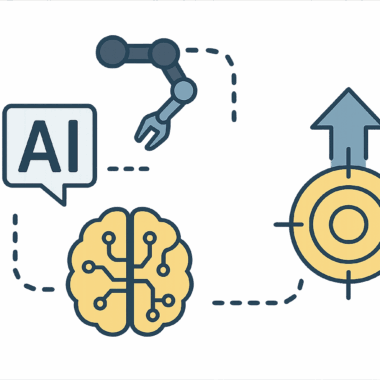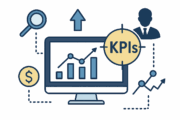

The Future of Performance Marketing: AI, Automation, and Attribution

Content:
- What Is Performance Marketing Today?
- The Role of AI in Performance Marketing
- Marketing Automation and Workflow Optimization
- Attribution Models: Past vs Future
- Challenges Ahead: Data Privacy, Accuracy & Platform Bias
- How Marketers Can Prepare for the Future
- Conclusion
- FAQ
The landscape of performance marketing is undergoing a radical transformation. Driven by advancements in artificial intelligence, automation technologies, and data attribution methods, the industry is shifting toward more efficient, personalized, and intelligent advertising ecosystems. Businesses can no longer rely on outdated tracking models or manual optimization techniques to stay competitive.
The future of performance marketing will be defined by precision, real-time adaptation, and smarter use of first-party data. This article examines how AI, marketing automation, and modern attribution frameworks are reshaping performance-based strategies—and what marketers must do to adapt.
What Is Performance Marketing Today?
Performance marketing refers to digital campaigns that are measured and paid for based on specific outcomes—clicks, leads, sales, or other predefined actions. It is a data-centric approach, focused on optimizing advertising ROI through quantifiable results. Channels include paid search, social media advertising, programmatic display, influencer partnerships, and affiliate networks.
Today’s performance marketers rely heavily on platforms like Google Ads, Meta, and TikTok, along with specialized tools for tracking, testing, and audience segmentation. However, much of the current practice still depends on linear attribution, manual budget allocation, and siloed data sets, which limits scalability and precision.
The Role of AI in Performance Marketing
Artificial intelligence is no longer experimental; it is now a core component of modern performance campaigns. AI in performance marketing allows for real-time data processing, predictive audience modeling, and automated campaign optimization based on dynamic variables.
Key applications include:
- Predictive analytics: AI identifies user behavior trends before conversions happen.
- Dynamic ad creation: Algorithms automatically generate ad variations based on user context.
- Smart bidding: Platforms use machine learning to adjust bids based on conversion probability.
By reducing reliance on static rules and historical assumptions, AI enables marketers to scale campaigns efficiently while minimizing waste.
Marketing Automation and Workflow Optimization
Automation is essential to operating performance campaigns at scale. It removes friction from workflows, reduces human error, and ensures faster execution. Marketing automation tools streamline repetitive tasks such as budget pacing, A/B testing, and campaign reporting.
Examples of automation in action:
- Lead routing: Automatically assigns leads to sales based on predefined criteria.
- Ad scheduling: Adjusts campaign delivery based on time zones or peak engagement periods.
- Budget reallocation: Shifts ad spend to top-performing channels in real-time.
When integrated with CRM and analytics platforms, automation empowers teams to shift focus from manual execution to strategic optimization.
Attribution Models: Past vs Future
Traditional attribution models like last-click are no longer sufficient in a multi-device, multi-touchpoint environment. They oversimplify customer journeys and often misallocate credit to the final interaction, ignoring upper-funnel influence.
Modern attribution is evolving into:
- Multi-touch attribution (MTA): Assigns value to each interaction along the conversion path.
- Algorithmic attribution: Uses machine learning to weigh the impact of various touchpoints dynamically.
- Data-driven attribution (DDA): Tailored by platforms using proprietary data models.
Comparison Table
|
Attribution Model |
Description |
Limitations |
|
Last-click |
Credit goes to final interaction |
Ignores earlier influence |
|
First-click |
Credit goes to first interaction |
Overvalues initial touch |
|
Linear |
Equal credit to all steps |
Doesn’t reflect actual influence |
|
Algorithmic |
Weighted by AI based on impact |
Requires large data sets |
Marketers must choose attribution strategies aligned with their sales cycle, platform ecosystem, and available data.
Challenges Ahead: Data Privacy, Accuracy & Platform Bias
Despite progress, the path forward is not without obstacles. Data privacy regulations such as GDPR, CCPA, and iOS tracking limitations are reshaping how data can be collected, stored, and used. These changes reduce the availability of third-party data, pushing marketers to rely more on first-party insights and consent-based tracking.
Another concern is platform bias. Ad platforms optimize for their own goals—not necessarily the advertiser’s. This misalignment can distort reporting and performance if marketers depend solely on native dashboards. Additionally, algorithmic attribution can perpetuate bias if training data is incomplete or skewed.
How Marketers Can Prepare for the Future
To remain competitive, marketers must adopt forward-looking strategies that combine technology, data governance, and skill development.
Key recommendations:
- Invest in first-party data infrastructure (CDPs, server-side tagging, zero-party data collection).
- Train teams in AI literacy and data interpretation to reduce dependence on black-box platforms.
- Adopt cross-platform analytics tools to consolidate data and gain unified campaign insights.
- Test new attribution models regularly and compare them to legacy methods.
Organizations that build internal expertise and flexible data pipelines will adapt faster to disruption and extract more value from performance channels.
Conclusion
The future of performance marketing will be defined by intelligent systems that automate decision-making, optimize outcomes in real-time, and attribute value with greater accuracy. Marketers who fail to modernize their stack risk being left behind in a landscape driven by speed, precision, and data compliance.
Success will depend on integrating AI, embracing automation, and implementing robust attribution models. Those who lead with innovation and adaptability will gain a sustainable competitive advantage.
FAQ
What is the biggest shift in performance marketing today?
The shift from rule-based optimization to AI-driven decision-making is the most significant change.
Why is last-click attribution considered outdated?
It ignores the contribution of earlier interactions and oversimplifies customer behavior.
How does AI improve campaign performance?
AI enhances targeting, automates bidding, and predicts outcomes based on user data patterns.
Are automated tools replacing human marketers?
No. They augment human capabilities by handling repetitive tasks, allowing teams to focus on strategy.
What skills do marketers need for the future?
Data analysis, AI literacy, platform fluency, and attribution modeling are essential skill sets moving forward.

Affiliate Management: How to Manage Partners and Affiliate Programs Like a Pro
An affiliate program is a structured marketing arrangement in which businesses reward external partners—affiliates—for generating leads, traffic, or sales. Each affiliate receives a unique tracking link to promote the company’s product or service. When conversions are made through these links, the affiliate earns a commission, typically based on CPA (Cost Per Acquisition), CPS (Cost Per Sale), or hybrid payment models.

Affiliate Marketing KPIs: How to Track and Improve Performance
Affiliate marketing KPIs allow program managers to evaluate partner performance, track campaign efficiency, and allocate resources where they yield the highest return. Without precise KPI tracking, affiliate initiatives risk becoming inefficient, opaque, or misaligned with business goals. This article outlines the essential KPIs, methods to track them accurately, and proven strategies to improve results.
Is Affiliate Marketing Legal?
Affiliate marketing has become as common as billboard advertising. It’s a staple diet in the digital landscape, offering individuals and businesses opportunities to generate income through online referrals and partnerships. However, amidst this wave, questions about its legality have arisen. Is affiliate marketing legal?



